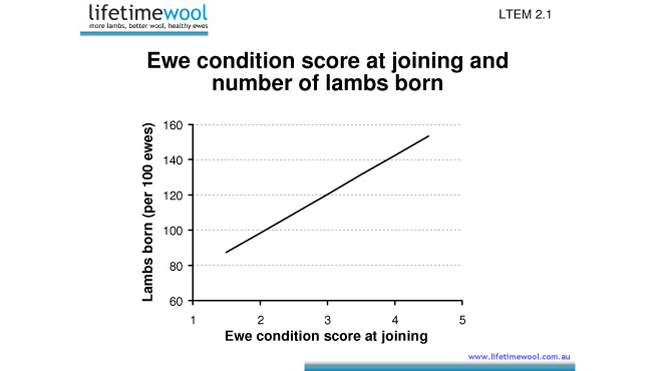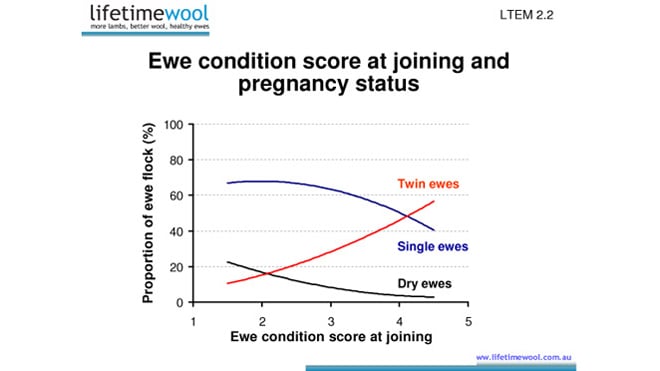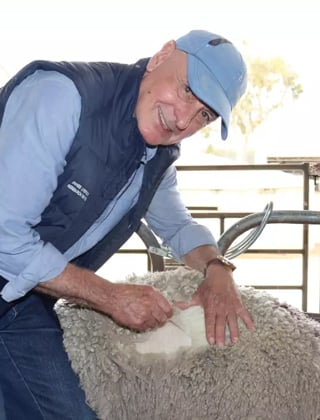Strategies to increase conception and reproductive rates

Joining is fast approaching for many woolgrowers in WA, whilst some of you will have already joined. We’ve pulled some information together to provide a refresher on the key factors which influence joining outcomes.
Improving reproductive efficiency is a priority for the sheep industry and is an in investment focus for AWI, with several training opportunities and resources available to woolgrowers. We’ve listed some of the key resources, tools and training opportunities available to help you with managing your ewes and rams to achieve reproductive success at the end of this article. If you prefer to watch rather than read, check out the AWI Change Makers episodes listed at the end of this article which cover some of the key factors associated with achieving good joining outcomes.
Time of joining
Sheep are seasonal breeders, although seasonality varies between breeds with British breeds being more seasonal than Merinos. Oestrus (a.k.a. cycling) activity increases after the longest day of the year (22nd December) to peak between March and May, when most ewes are cycling and with higher ovulation rates.
Selecting the time of joining is the most important decision made within sheep enterprises. It is typically most profitable to match the energy demands of ewes to that supplied by pasture. This means selecting the time of joining which matches the early lactation period, when the ewe’s energy demands peak, with peak energy supply from pasture. Sometimes the most favourable time of lambing will be outside of this period which will likely mean that ewes require supplementary feeding to optimise productivity and ensure that they are in good condition for their next joining. Other influences of the time of lambing include the market choice and planned growth rates of lambs to meet market specifications.
Length of joining
Most ewes will conceive within 5 weeks, which represents two 17-day oestrus cycles. Joining for longer periods is generally not recommended because the extra 2-4% lambs conceived complicate management due to delays in marking and weaning, which can increase worm burdens, generate a greater ‘tail’ of lambs which have lower weight and are at greater risk of mortality and delay recovery of ewe condition score before the next joining.
Managing ewe nutrition
Managing ewe nutrition is the most important factor to ensure best reproductive performance. Condition scoring is one of the key tools for managing ewe nutrition.
Ewe condition score is the most important determinant of ovulation rate. The target condition score at joining is a balance between reproductive performance, stocking rate and the cost of achieving that score. The response to reproductive rate in Merinos is linear between ewes in condition score 1.5 to 4.5, although the risk of dystocia increases at condition scores of 4 or greater. The Lifetime Wool project showed that, on average, ewes conceive 20% more lambs for each additional condition score at joining. This response varies from 7% to 36%, depending on genetics and time of lambing, with later lambing likely to be more responsive. The time of weaning and management of ewes based on condition score after weaning are key strategies to achieve higher condition scores at joining.


“Flushing” ewes refers to short-term nutritional supplementation with green feed or lupins for one-week before and after joining. Flushing can decrease the number of dry ewes and increase the number of ewes conceiving multiples, however responses are variable. Ewes are more likely to respond if they are in condition score of less than 3. It should also be noted that ewes in poor condition (condition score <2) that are stimulated to ovulate and conceive are at greater risk of mortality.
Joining management – targets and tips to achieve successful outcomes
Ewes
- Target condition score at joining is ≥3. Check out the Lifetime Wool website for condition score targets for your region and time of lambing.
- Maiden hoggets should be 75-80% of their mature weight for a successful joining.
- Join maiden ewes and adults separately as they have different ram requirements.
- Ensure ewes are healthy - free from worms, flies and feet issues.
- Avoid joining ewes within two weeks of shearing as shearing can disrupt cycling activity for two weeks.
- Avoid joining ewes with full wool as mating can be physically more difficult.
- Avoid joining ewes on pastures that may be toxic to sheep. For example, high endophyte perennial rye grass pastures may lower conception rates and lambing performance by as much as 20%, even without visible rye grass staggers.
- Avoid severe stress (such as more than 1kg liveweight loss per week or extreme variation in feed quality) when joining ewes, as embryo loss may be higher.
Rams
- Perform a breeding soundness examination at least 8 weeks before joining.
- Shear rams at least 8 weeks before joining as fevers resulting from shearing cuts can affect semen quality.
- Feeding rams with a high-quality feed such as lupins for 50 days before joining can maximise teste size and sperm output, particularly if rams are needing to increase condition score before joining.
- Target condition score 3.5 at joining.
- Ram:ewe ratios:
- Mature ewes – join at 1% + 1.
- Maiden ewes – join at ≥ 1.5%.
- Ewe lambs – join at ≥ 2%.
- Increase ram % if joining in large paddocks with multiple watering points or if joining outside of the main breeding season.
- Avoid joining inexperienced rams with maiden ewes.
- Avoid joining rams with high ASBVs for birthweight to maiden ewes.
- Allow newly introduced rams 8 weeks to acclimatise if they have been brought from outside your district.
- Ensure rams are accustomed to the same supplementary feed as the ewes if the ewes are being supplementary fed to avoid rumen acidosis.
Where to find out more?
AWI Training & Extension
Lifetime Ewe Management Training Course
Lifetime Ewe Management (LTEM) is AWI’s flagship producer extension program. The LTEM course, supported by AWI across Australia, aims to increase producers’ understanding of the influence of ewe nutrition and management on overall reproduction rates and lamb and ewe survival. Producers develop the skills to manage their ewes to achieve condition score targets and explore the economics of supplementary feeding and pasture management to review stocking rates.
RAMping Up Repro workshop
AWI, in partnership with Zoetis Australia, developed RAMping Up Repro (RUR) which is a hands-on workshop focused on improving ram performance and working longevity in commercial sheep enterprises. The workshop is designed increase the skill of producers across the key components of ram performance and impacts on overall breeding enterprise performance, including; anatomy, physiology, spermatogenesis, metabolic demands, health, disease & biosecurity and the financial impact of the ram team.
If you can’t get to a RAMping Up Repro workshop, don’t worry. The recording of a special RAMping Up Repro webinar organised in April 2020 by AWI’s grower extension network in NSW, Sheep Connect NSW, is available to view online. While the free webinar isn’t a substitute for the hands-on workshop, it still provides good advice on how to improve your rams’ breeding efficiency. Check it out at www.sheepconnectnsw.com.au/tools/84
Amy Lockwood, AWI Extension WA







